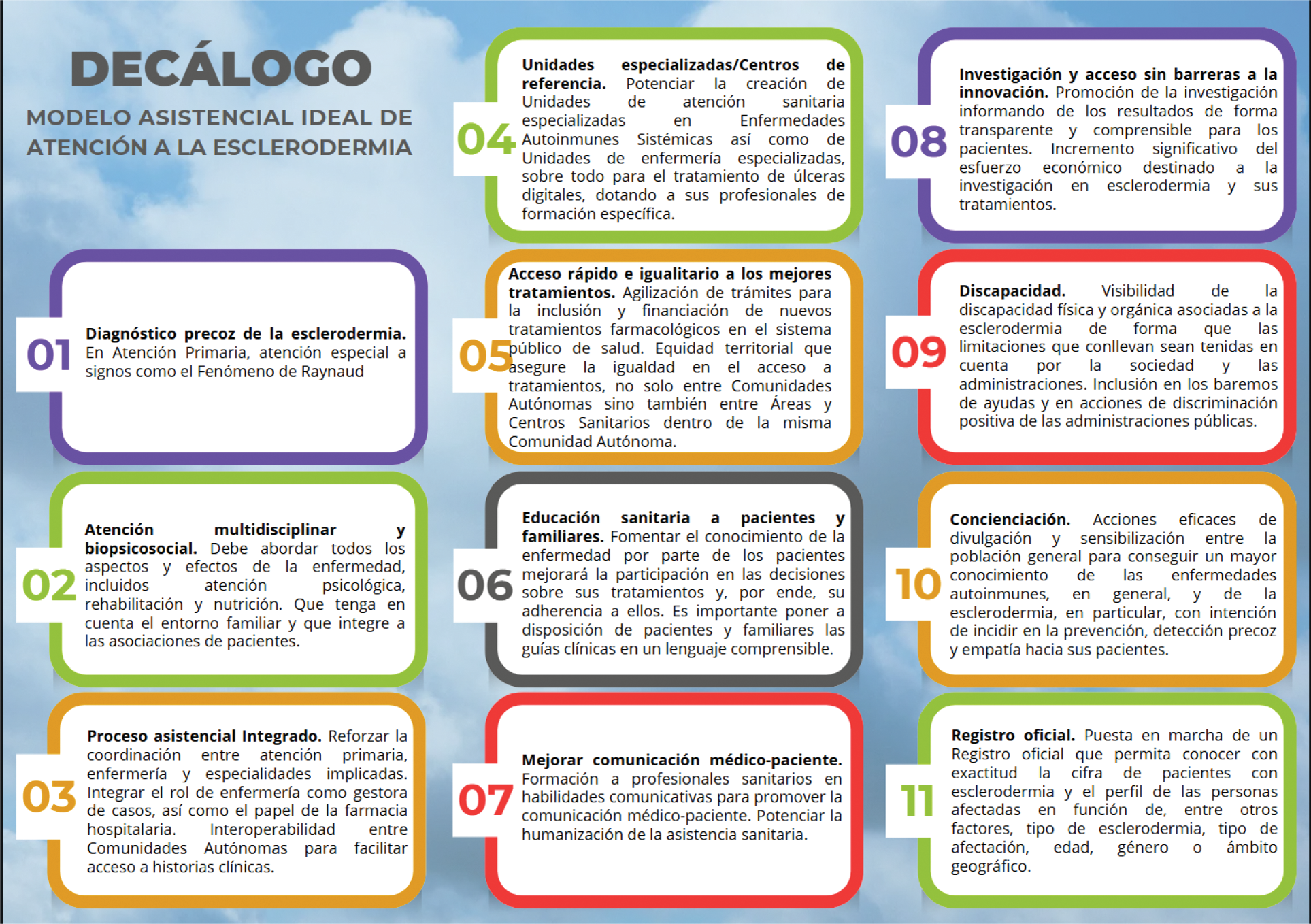

Background: Systemic sclerosis, also known as scleroderma, is a rare, chronic and heterogeneous disease. As a rare disease, people who suffer from it face not only their own lack of knowledge about the disease, but also that of their loved ones and even health professionals. The Asociación Española de Esclerodermia (Scleroderma Spanish Association, AEE from now on) is a non-profit organisation founded on 1995 and recognised as a Public Utility entity since 2019. Its main objective is to promote the adoption of all necessary measures to improve the quality of life of people living with scleroderma and their relatives. Each 29 th June, the AEE together with Federation of European Scleroderma Associations and the associations and scleroderma patients all over the world celebrate de World Scleroderma Day. A day to raise awareness about the disease.
Objectives: The objectives of the 1st National Congress on Scleroderma for Patients in Spain were twofold. The first was to provide systemic sclerosis patients and their relatives with clear medical information about the disease in a 360º view. The second was to present the AEE’s Decalogue entitled “Ideal care model for scleroderma.”
Methods: The participants were asked to register for the conference, including their first and last name, accommodation needs and meal preferences. After the event, a survey was sent by email to evaluate both the conferences and speakers and the organization in terms of accommodation and meals. All the conferences were recorded and later uploaded to the AEE YouTube channel to make them available to the entire Spanish-speaking community.
Results: Statistics: 74 online and 18 onsite inscriptions, 9 speakers, 3 moderators and 1 presenter. 67% of attendees spent the night in Valladolid. Only 48 attendees answered the evaluation form 36 patients, 11 relatives. The congress met 100% of the expectations of 80% of those who responded. The most viewed video on YouTube has had almost 580 views, the least viewed around 200. Congress Content: The congress was organized into three round tables focused on a topic of interest and a final conference. The topic of the first panel was RESEARCH. A summary of current clinical trials in Systemic Sclerosis, and the results of two studies in which the AEE has collaborated in the recruitment of patients were presented:
Foot Functionality Study: Raynaud’s and hydration in people with scleroderma and
Evaluation of digestive involvement and its treatment in patients with scleroderma.
For the second one the chosen topic was DIAGNOSIS. The speakers talk about how the immune system works and the questions we ask ourselves when we receive a diagnosis. The third panel, MISCELLANEOUS, addresses issues about everyday life: Vaccination, Stress and Mindfulness and a game in Kahoot format as a starting point to explain basic issues about the disease. The theme of the final conference was CARDIO-RESPIRATORY AFFECTATION IN SCLERODERMA. The AEE Decalogue: IDEAL MODEL OF CARE FOR SCLERODERMA was also presented during the congress. This is its summary content:
Early diagnosis of Systemic Sclerosis.
Multidisciplinary and biopsychosocial care.
Specialized units/Reference centers.
Rapid and equal access to the best treatments.
Health education for patients and families.
Improving doctor-patient communication.
Research and barrier-free access to innovation.
Disability.
Awareness.
Official Registry of Patients.
Conclusion: Patients and relatives are so interested in learning about scleroderma that they travel from their homes and spend an overnight away from home to learn about their disease. It is worthwhile and necessary to continue the effort to organize educational meetings to raise awareness of systemic sclerosis among patients, their relatives and society in general.
REFERENCES: [1] Website of Asociación Española de Esclerodermia:
[2] AEE’s Youtube Channel Playlist of the congress
DECALOGUE.

Acknowledgements: All the speakers and attendees to the congress. All members of the Asociación Española de Esclerodermia for their support and collaboration.
Disclosure of Interests: None declared.
© The Authors 2025. This abstract is an open access article published in Annals of Rheumatic Diseases under the CC BY-NC-ND license (